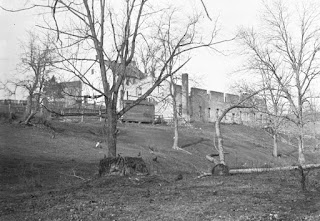 |
| Spring Grove, taken by Charles Philips, 1895 |
Many of the recent posts here have been about families and their farms, but as we all know, this ain't Farm Creek Hundred, it's
Mill Creek Hundred. It's been a while since we've taken a look at one of the many mills that one graced our region, and one of the main reasons for that is that I've already written about most of the major mills that operated here. There were, however, numerous smaller mills around that operated for varying lengths of time, and about which we know very little. This is the story of one such mill -- Spring Grove. This is a fascinating story, with only a few small holes remaining in the narrative.
I've known of the existence of the mill for quite a while, but I had been unsuccessful in finding very much information about it, until recently. Through my own research and through the amazing and detailed research of the site's current owner, David Deputy, we've come up with an almost complete history of the site, the mill, and the house built next to it. And what a story it is!
We begin in the days prior to the American Revolution, when Henry Brackin, Sr owned a large tract of land along what would become Stony Batter Road, as well as an old sawmill built along Mill Creek. His land actually stretched slightly across Mill Creek, and it was on or very near the southeastern portion of Henry's farm, very near that sawmill, that on September 8, 1777, British and American sharpshooters traded shots as the invading Red Coats camped along Limestone Road. This event would be known as Gen. Weedon's Foray, and was uncovered by Walt Chiquoine during his research for his paper
Finding the Nichols House. When Henry died in 1779, his property went to his son Henry Brackin, Jr.

